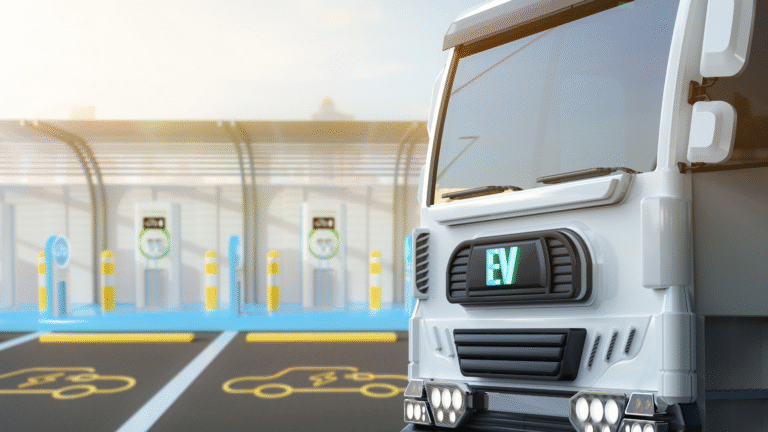Corporate fleets are among the most powerful accelerants of electric vehicle adoption — they buy in bulk, justify depot charging investment, and provide operational data that refines vehicle design and infrastructure planning. This article explores which sectors and companies are leading electrification in Australia, why their actions have broad effects across supply chains and communities, and how fleet managers should plan to capture the benefits.
Table of Contents
- The sectors leading electrification and why they move first
- The system-wide impacts of major fleet transitions
- Operational challenges fleets must solve (charging, depot upgrades, rostering)
- How to make the business case: TCO modelling and non-financial benefits
- Practical next steps for fleet managers and procurement teams
- FAQs
- Conclusion
1. The sectors leading electrification and why they move first
- Utilities and government fleets: Often first movers due to policy mandates, visibility and long-term public procurement goals. They accept early adoption costs to demonstrate leadership and meet emissions targets.
- Delivery and logistics: High-mileage operations capture fuel and maintenance savings fastest; depot charging economics are compelling where duty cycles are concentrated.
- Ride-hailing and taxi fleets: Frequent daily kilometres and centralised operating patterns make electrification financially attractive earlier than for low-utilisation fleets.
- Corporate passenger fleets: Driven by corporate ESG commitments and client expectations, many large companies now adopt EVs to meet internal sustainability targets.
These sectors set precedents that others follow, influencing supply chains and local charging availability.
2. The system-wide impacts of major fleet transitions
- Scale effect on supply: Large volume orders encourage manufacturers to allocate supply and can spur local investment in assembly or battery supply chains.
- Infrastructure growth: Depot chargers and corridor investments catalysed by fleets often benefit the public network through shared-use agreements.
- Workforce development: Fleet electrification drives investment in technician training and HV safety skills across the maintenance ecosystem.
- Used-EV pipeline: Fleet turnover creates a consistent second-hand market, improving used-EV availability and affordability over time.
When big fleets move, markets and infrastructure follow.
3. Operational challenges fleets must solve
- Depot power upgrades: Upstream network capacity may need reinforcement; solutions include battery buffering, managed charging and staged rollouts.
- Vehicle selection by duty cycle: One-size-fits-all rarely works — choose models that match route length, charging windows and payload needs.
- Rostering and uptime: Redesigning shifts to allow predictable charging cycles improves utilisation and reduces the need for high-power charging at scale.
- Data and telematics: Advanced telematics are necessary to optimise charging, predict degradation and schedule maintenance.
Early pilots that simulate full duty cycles reduce rollout risk.
4. How to make the business case: TCO modelling and non-financial benefits
- Total cost of ownership (TCO) for high-utilisation fleets often tips in favour of EVs due to lower energy and maintenance costs, despite higher upfront purchase price.
- Non-financial benefits: corporate emissions reporting, customer expectations, recruitment appeal and brand differentiation. These can be decisive for procurement committees.
- Payback pathways: Combine procurement incentives, green finance and operational savings to shorten payback periods. Include resale or battery valorisation assumptions conservatively.
A transparent TCO model with scenario stress-testing is essential.
5. Practical next steps for fleet managers and procurement teams
- Pilot and test with a representative subset of vehicles and routes.
- Map depot energy profiles and engage early with distribution networks on capacity and demand management.
- Create staged rollouts with battery-buffer pilots to delay costly network upgrades.
- Partner with OEMs and energy providers to obtain bundled offers and service-level agreements.
- Train staff in HV safety and new maintenance procedures.
Start small, measure results, scale fast when pilots validate assumptions.
FAQs
Q: Which fleets will electrify fastest?
A: High-mileage, depot-based operations — delivery, utilities and public fleets lead due to quick payback and visible benefits.
Q: Do fleets need huge upfront investments?
A: Some investment is needed for chargers and depot upgrades, but grants, green loans and staged approaches can manage costs.
Q: Will fleet electrification strain the grid?
A: Managed charging, battery buffers and network planning mitigate peak impacts. Early engagement with networks avoids surprises.
Conclusion
Corporate fleets are a pivotal force in Australia’s EV transition. Their bulk orders unlock supply, their depot investments expand charger networks, and their operational learnings accelerate broader uptake. For fleet managers, immediate priorities are pilots, depot energy planning and careful TCO modelling. When executed well, electrification reduces operating costs, meets sustainability goals and primes markets for mass adoption.
Meta description: Corporate fleets accelerate EV adoption — learn who’s leading in Australia, why fleet moves matter for supply and infrastructure, and how to plan depot electrification effectively.
